Coronavirus: Victorian cases drop to 303 new infections and four deaths, as New Zealand extends restrictions
In a promising sign that Victoria’s coronavirus crisis is improving, the state has recorded a drop in new infections. It came as more cases emerged in NSW and New Zealand extended its lockdown.

Coronavirus
Don't miss out on the headlines from Coronavirus. Followed categories will be added to My News.
Victoria’s COVID-19 infections have dropped to 303 new cases in the past 24 hours, while the state’s death toll has risen by four.
Today’s figures reflect a decline from the 372 infections that Victoria recorded on Friday, and marks one of the lowest daily death tolls in previous weeks.
Though Victorian Premier Daniel Andrews said it was too early to talk about easing Stage 4 lockdown.
“I think it is too far away for us to have the clarity that we would need to make those assorted predictions,” Mr Andrews said at his press conference.
“But for my judgment it is too early for us to be making predictions about when that is.”
His comments came as Chief Health Officer Brett Sutton said the Stage 4 lockdowns had seen the state turn a corner in controlling the devastating second wave.

“It is not to say we will not continue to work extremely hard on addressing these challenging settings, but we are seeing the benefits of what everyone is doing in the community in wearing masks and getting tested and isolating when they have the very first symptoms and in complying with isolation and quarantine when contacted by the department,” Professor Sutton said, speaking to media in Melbourne.
Professor Sutton said Victoria’s COVID-19 reproduction rate – a key indicator in tracking how far the virus spreads – is now “almost certainly below one”. He said the aim was to have it at 0.4-0.5.
Concerns remain about regional Victoria after Geelong, Ballarat and Bendigo all record new virus infections.
STATE OF PLAY IN NSW
Nine new cases of COVID-19 have been recorded in NSW, including two connected to an outbreak at Smithfield RSL that currently has no known source.
Dr Jeremy McAnulty said that one of the nine cases is a staff member at Chopstix Asian Cuisine in the Smithfield RSL, the source of which is currently unknown. A second staff member has also tested positive, thought to be a secondary infection from their colleague.
The other cases all have known sources: one student at Tangara Girls, one person who attended the Mounties Club at Mount Pritchard, and five close contacts of confirmed cases.
People who dined at the Chopstix restaurant between July 31 and August 9 must monitor for symptoms and immediately get tested and self-isolate if any present.
People who dined at Rick Stein at Bannisters in Mollymook on August 1 between 8pm and 10.30pm for at least one hour must get tested right away, and self isolate until midnight tonight.
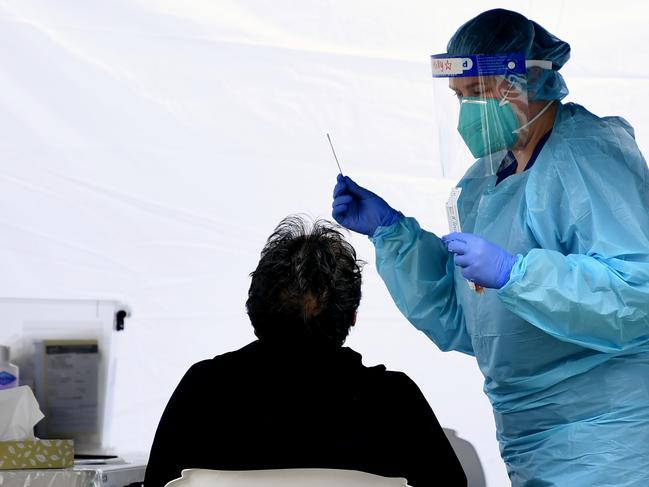
Dr McAnulty said maintaining a high level of testing is “vital” as the virus continues to circulate in the state.
Over the 24 hour period in which the nine cases were detected, 27,389 tests were conducted.
Currently 129 people are being treated for the virus in hospital. Seven are in intensive care and five of those people on ventilators.
‘GOING HARD’
Jacinda Ardern announced restrictions in New Zealand will be extended for another two weeks.
Auckland will remain at stage three and New Zealand will remain at level two until 11:59pm on Wednesday, August 26.
“In keeping with our cautionary approach and New Zealand’s philosophy of going hard and going early, today, cabinet has agreed to maintain our current settings for an additional 12 days, bringing us to a full two weeks in total,” Ms Ardern said.
“Our current expectation is that by this time, the perimeter of the cluster will be identified, will be isolated, and we can move to level two in Auckland with confidence.”
She said the restrictions will be reviewed on August 21.

“There is nothing to suggest we need to move to a level four lockdown at this stage. As we do not have a number of clusters or unrelated cases,” she said.
The island state reported 13 new cases of coronavirus on Friday.
A total of 30 cases have now been registered after the country was free from the virus for 102 days.
All but one of the cases are linked to a cluster centred in Auckland. The other case is likely linked to the cluster but is still under investigation.
Ms Ardern said a total of 38 people linked to the cluster are now in government-managed quarantine as a precautionary measure.
The earliest case determined was at a store in Mt Wellington that became sick on about July 31.
“In terms of the ongoing investigation to identify where the virus originated from, there are still no clear connections at this point,” she said.
“Contact tracing and genomic testing has not found a link to the border or managed isolation in quarantine facilities at this stage.”
She said more than 30,000 tests were undertaken in the last 48 hours.
‘NO ASSURANCES’: PM
It comes as Prime Minister Scott Morrison has said “there are no absolute assurances” during the COVID-19 pandemic.
“On some days, the pandemic gets the better of us, and on other days, it doesn’t. And I think we’ve got to have a reality check about this,” Mr Morrison said.
“It’s tough. And it’s going to continue to be tough.”
The Prime Minister yesterday announced that interstate health workers are set to be deployed to Victoria in a bid to assist the state with its case numbers and ongoing aged care crisis.
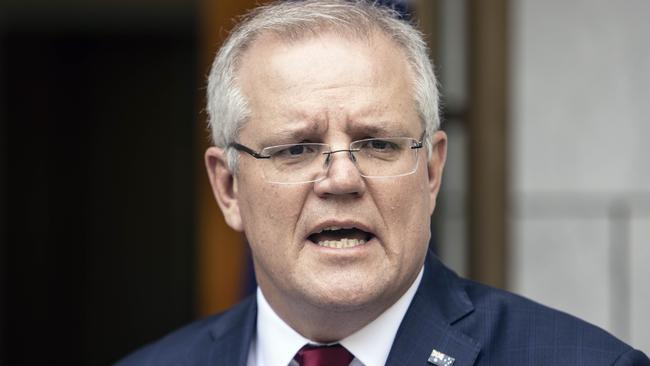
VICTORIA’S CASE NUMBERS RISE
After days of declining figures, COVID-19 infections spiked again in Victoria on Friday when the state recorded 372 new virus infections and 14 deaths in 24 hours.
12 of the 14 fatalities were linked to aged care outbreaks, but one death included a man in his 20s. Those numbers marked a sharp rise from Thursday’s figures, when cases fell to 278.
During his daily briefing, Premier Daniel Andrews also said there is a growing number of mystery cases, with the state’s total of unknown source cases now reaching 3,119.
The number marks a rise in 51 mystery cases. It came as Victoria Police revealed they issued 253 fines to people breaking lockdown restrictions overnight.
Of these, 75 were relating to people breaking curfew, and 41 related to people not wearing face masks.

Another related to a Whittlesea man who has been fined 10 times since the lockdown began, after he was discovered in Richmond on Thursday.
According to police, the man claimed he was visiting colleagues, but could not produce any documents to support his claim.
The latest fine brings the man’s total fine costs to over $16,500.
A testing blitz across regional Victoria has been announced after a significant rise in cases have been recorded across Geelong, Ballarat and Bendigo.
‘COVID GENERATION’
More than one million Australians were out of work or actively looking for employment in the past month, new data revealed, as the number of COVID-19 cases in troubled Victoria dropped.
Labour force figures from the Australian Bureau of Statistics today showed Australia’s jobless rate had increased by just under 0.1 per cent from June, to 7.5 per cent.
“For the first time there were more than one million people out of work, available to work and actively looking for work,” ABS spokesman Bjorn Jarvis said.
“The number of unemployed people rose by nearly 16,000 between June and July.”
However, employment increased for 114,700 people between June and July 2020.
Full-time employment rose by 43,500 people and part-time employment by 71,200 people.
The largest increases in employment were recorded in New South Wales with 56,800 people now in work.
Almost 23,000 people in Victoria also got a job before stage 4 restrictions hit, and a further 19,100 people were employed in Western Australia.
Small decreases were seen in Queensland where 3700 more people found themselves out of work, and in the Northern Territory where 500 people were affected compared to June.
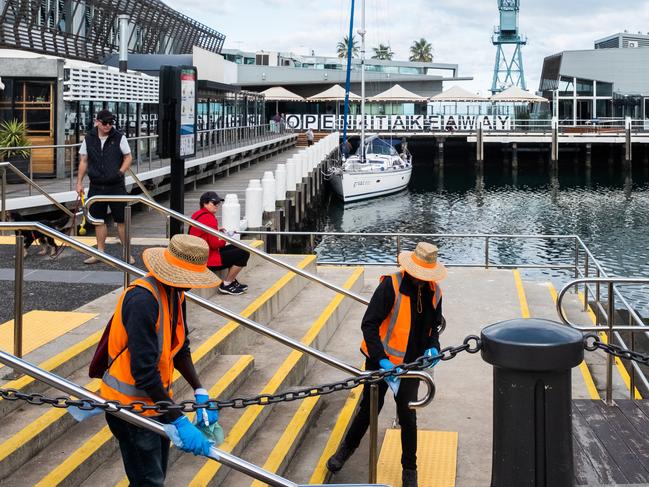
An exclusive report in The Australianrevealed that treasury head Steven Kennedy had confidentially warned business and union leaders that unemployment was expected to remain high for four or five years and the impact of the economic fallout of the pandemic will most affect young workers.
In an economic update to five key workplace reform groups navigating the post-pandemic recovery, Mr Kennedy warned that the unemployment rate was not expected to fall below 6 per cent for possibly five years.
Youth unemployment, he said, would be the “defining feature” of the COVID-19 crisis.
Australia’s tourism industry lost $11.8 billion in April and May after international borders closed, states went into lockdown and those who could afford to travel spent about half as much per night as they normally would.
New government data to be released today shows the tourism industry contracted by 87 per cent in April and May, with domestic spending down from $13.5bn in those two months last year compared with just $1.7 billion this year, The Australianreported.
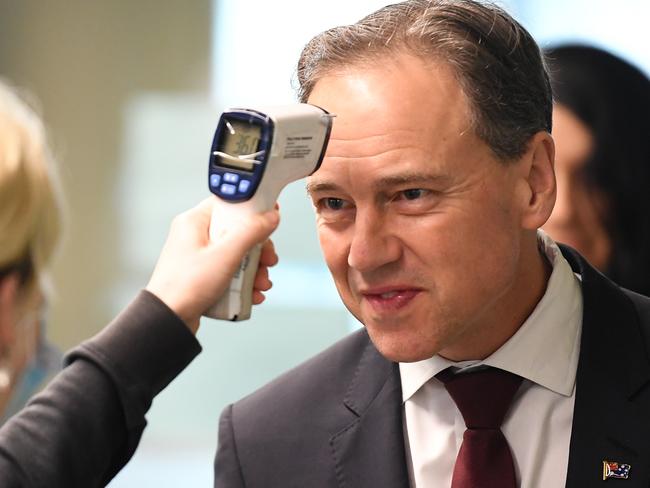
‘CAUTIOUS OPTIMISM’
Federal Health Minister Greg Hunt said there was “cautious optimism of a flattening of the curve” in Victoria, after a decline in case numbers and deaths was recorded on Thursday.
“In three states, there are three signs of hope, three signs of positive developments,” Mr Hunt said.
“Protection in Queensland and NSW. And reduction in Victoria.
“And so, cautious optimism of a flattening of the curve. We know that the Australian numbers, however, come with an agonising detail,” the Minister said.
“That detail is that nine more lives have been lost. Nine families will be grieving and all of those that have supported these people will be experiencing that deep human tragedy.
“All up, 292 cases around Australia. But Victoria at 278 has seen its lowest numbers in some weeks. So, there is the agony, but then there is the hope at the same time.”
U.S. DEATHS HAVE ALREADY PASSED 200,000 SAYS REPORT
Across the United States, at least 200,000 people have died from coronavirus, according to a New York Times analysis of estimates from the Centers for Disease Control and Prevention. This is much higher than the number of deaths that have been directly linked to the coronavirus pandemic estimated by Johns Hopkins figures, which stand at around 168,000.
The Times suggests that the official death counts may be substantially underestimating the overall effects of the virus, as people die from the virus as well as by other causes linked to COVID-19 symptoms.
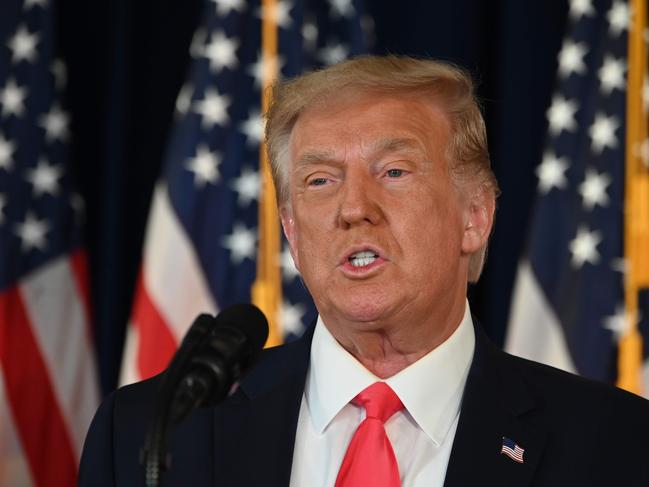
In addition, many states are weeks or months behind in reporting their death tolls.
While initially New York City in the first few months of the pandemic was plagued by a staggering number of deaths, which peaked at more than seven times normal levels, it is the Southern and Western states that resisted lockdown which are seeing abnormally high fatalities.
Despite the grim toll which has placed the US as world leader in number of coronavirus cases, US president Donald Trump said of the virus: “it will be going away.”
In an interview, Mr Trump told Fox Business Network, “They scream, ‘How can you say that?’”
“I said, because it’s going to be going away.”
It comes as the CDC warns that the US must brace for the “worst” Autumn ever in the history of public health disasters if Americans don’t follow coronavirus guidelines.
“For your country right now and for the war that we’re in against COVID, I’m asking you to do four simple things: wear a mask, social distance, wash your hands and be smart about crowds,” Dr. Robert Redfield, director of the Centers for Disease Control and Prevention, told WebMD.
“I’m not asking some of America to do it. We all gotta do it.”
If people fail to follow those tips, next season could be “the worst fall, from a public health perspective, we’ve ever had,” he said, according to the New York Post.
Dr Redfield’s powerful plea came as COVID-19 fatality numbers soared with 1499 deaths reported on Wednesday alone — the most in a single day since May, according to Johns Hopkins University data.
Speaking about online efforts by anti-vaxxers to discredit vaccines — along with a recent poll showing one-third of Americans would refuse to get the shot if it were available — other experts acknowledged a strong public education campaign is needed.
“We are behind here,” said Dr. Francis Collins, director of the National Institutes of Health, according to CNN. “We haven’t done a good job of getting [coronavirus vaccine] information out there.”
“Speaking for myself, I think I underestimated the level of public resistance … I didn’t expect it to be that widespread,” he said.
As of Thursday, more than 5.2 million people in the US had been infected with the coronavirus, according to Johns Hopkins University data.
CHINA FINDS CORONAVIRUS ON FROZEN FOOD
A sample of frozen chicken wings imported from Brazil has tested positive for the novel coronavirus in the southern Chinese city of Shenzhen, authorities said on Thursday, local time.
It is the latest in a series of reports of virus-contaminated imported food products, according to CNN.
The coronavirus was detected on a surface sample taken from a batch of chicken wings during screening of imported frozen food in Longgang district of Shenzhen, the municipal government said.
Beware of Frozen Food: China Says Authorities Found Coronavirus on Imported Chicken Wings From Brazil#CoronavirusPandemic #COVID19 https://t.co/Uxvl31ElrA
— IBTimes SG (@IBTimesSG) August 13, 2020
Health authorities, including the World Health Organisation (WHO) and the US Centers for Disease Control and Prevention (CDC), have said the possibility of catching the virus through food is low.
Shenzhen health authorities immediately traced and tested people who were in contact with the product, and results came back negative; all related products in stock have been sealed off and tested negative, the statement said.
Authorities are now tracing products from the brand.
Brazil has reported more than 3.1 million coronavirus cases, the second highest in the world after the United States, according to Johns Hopkins.
News of the contaminated chicken wings comes a day after coronavirus was found on the packaging of shrimps imported from Ecuador at a restaurant in eastern Anhui province during a routine inspection, China’s state broadcaster CCTV reported.
Coronavirus has been detected on the packaging of imported seafood products across several cities in China.
“There is no evidence to date of viruses that cause respiratory illnesses being transmitted via food or food packaging. Coronaviruses cannot multiply in food; they need an animal or human host to multiply,” the WHO says.
AUSTRALIA MAY FACE VACCINE DELAY
Australians could miss out on getting in early on the leading COVID-19 vaccine with US and UK citizens receiving it first.
The COVID-19 vaccine might be on the market from November but Australia does not yet have a contract to get a supply of the vaccine and the US and the UK will get it first.
The Oxford vaccine is leading the vaccine race and in September researchers will report on clinical trials testing and whether it prevents infection with the virus that causes COVID-19.
If it is found to work, residents of the US and the UK will get the vaccine first because their governments signed contracts in May with the big pharmaceutical company that is manufacturing the vaccine, even before it was known to be effective.
News Corp Australia has learned the Australian Government is still negotiating and does not yet have a supply agreement with pharmaceutical companies AstraZeneca or the Serum Institute of India which are producing mass quantities of the Oxford vaccine.
BLOOD TESTS ‘KEY TO COVID-19’
Several biomarkers found in blood tests performed on coronavirus patients can allow doctors to detect the more critical cases and help them prevent those infected from getting worse, according to a new study.
Researchers at George Washington University said in the study published in Future Medicine that five biomarkers were linked to greater chances of deterioration and possible death from the illness, Fox News reports.
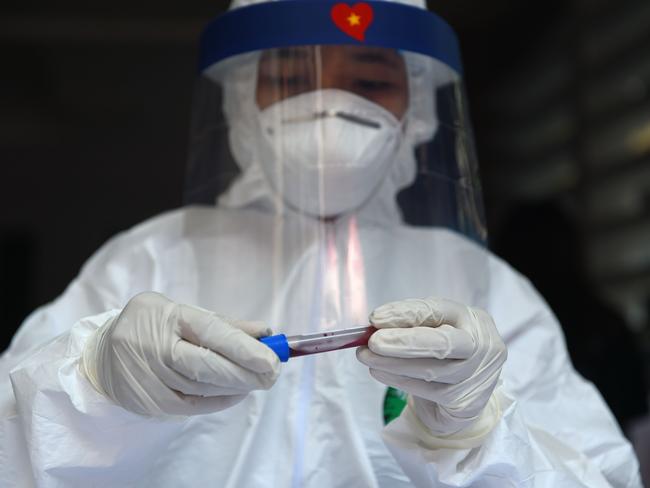
The authors said they decided to embark on the research after early findings in China showed biomarkers associated with poor outcomes in patients stricken by the deadly bug.
The scientists studied the blood of 299 people who tested positive for COVID-19 and then analysed five biomarkers present in their blood.
Higher levels of the biomarkers were linked with bleeding disorders and inflammation that showed an increased risk for admission into intensive care units, ventilation support and death, the report said.
“We hope these biomarkers help physicians determine how aggressively they need to treat patients, whether a patient should be discharged, and how to monitor patients who are going home, among other clinical decisions,” said Ayanian, an assistant professor of medicine at the George Washington University.
Doctors have so far been gauging the severity of the disease progression based on age and pre-existing medical conditions, including obesity, heart disease and a compromised immune system, the authors noted.
But a simple blood test could help guide patients’ treatment, they added.
